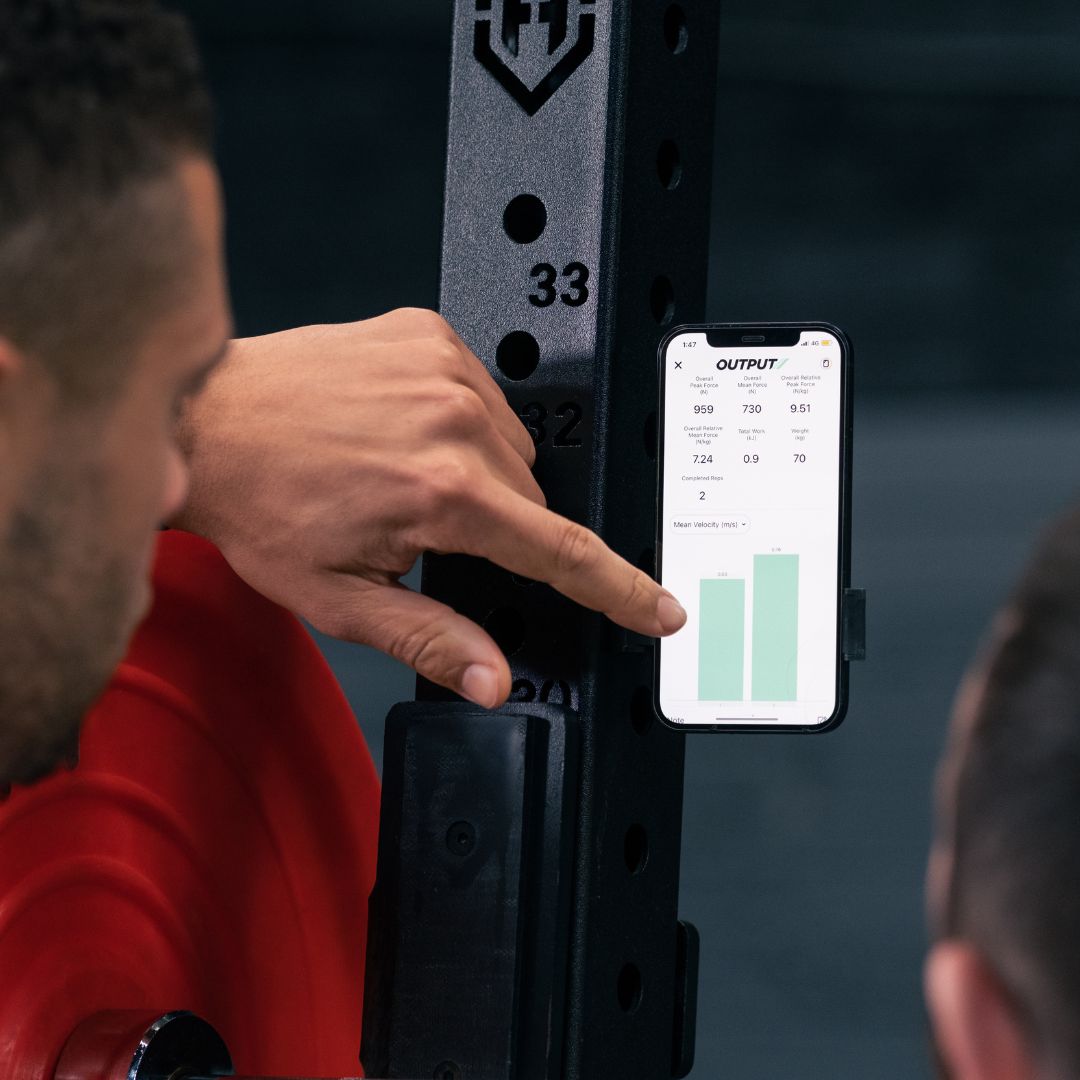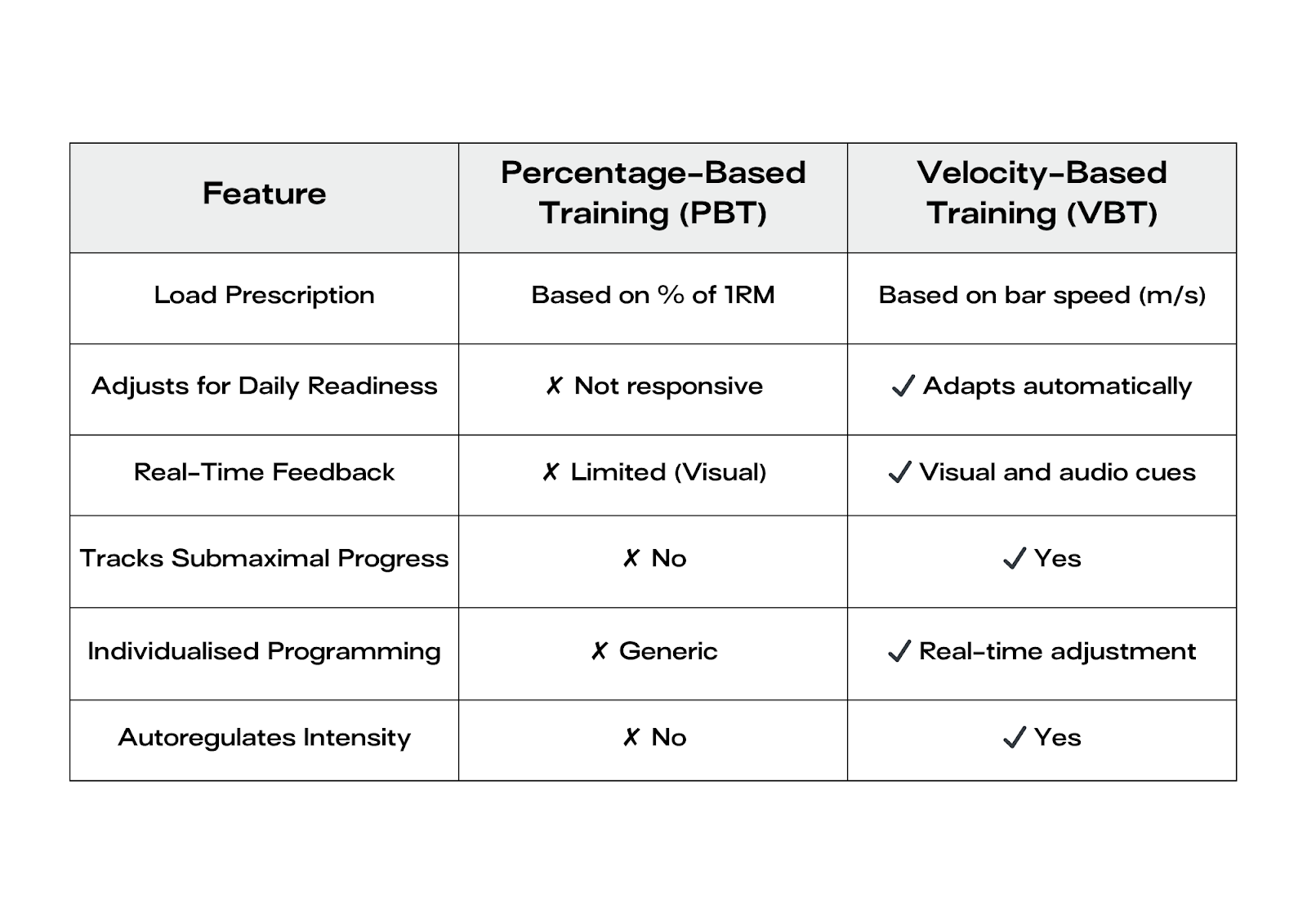BE THE FIRST TO GET PRODUCT UPDATES
Get notified about new features & special offers......

Have you ever coached an athlete, or experienced it yourself, when you just weren’t feeling it in the gym? Maybe you felt flat, couldn’t hit your usual numbers, or were under-fuelled, tired, or stressed.
Progressive overload, the practice of gradually increasing training, is a proven concept. But the process doesn’t always follow a straight path. Life happens, and athletes don’t always train at 100%.
This is where percentage-based training can fall short. If your program tells you to lift 85% of your one-rep max (1RM) on a day when you’re not fully recovered, the session might be counterproductive. You could miss reps, build unnecessary fatigue, or stall your progress.
Traditional strength programs usually begin by testing your 1RM, the heaviest load you can lift for one repetition. Future sessions are then based on percentages of that number.
Coaches aiming to develop strength with their athletes may programme:
4 sets of 3 reps at 85% of 1RM
This method assumes your 1RM is accurate and stable. It also assumes that strength progresses in a predictable way. But 1RM can fluctuate due to recovery, sleep, stress, and nutrition.
PBT has worked for decades, but it’s built on the assumption that your performance stays consistent over time. That’s rarely the case.

Velocity-Based Training uses the speed of the barbell, measured in meters per second (m/s), to guide your training.
Instead of prescribing a fixed weight, you prescribe a target bar speed. Different speeds align with specific training goals. We wrote more about that in this article here but in short:
Athletes always aim to move the bar as quickly as possible. The bar just moves slower when the load is heavier.
Because VBT responds to performance in real time, it naturally adjusts to how strong or fresh an athlete feels that day.
.jpeg)
Many coaches have had success with PBT, and it will continue to be effective. But VBT addresses some key limitations and offers additional value.
Once you test an athlete’s 1RM, every prescription after that depends on that single number. But strength can change week to week. If your athlete gets stronger, your plan may underload them. If they’re fatigued, it might push them too hard. With VBT, training is based on actual performance in the moment.
Training performance is affected by sleep, fatigue, soreness, and stress. PBT assumes steady progress regardless of these factors. VBT picks up on these fluctuations. If bar speed is down, you can adapt the session straight away.
If an athlete underperforms during testing, the entire PBT plan that follows is based on inaccurate data. This can lead to consistent undertraining or excessive loading, both of which limit results.
VBT provides instant visual and audio cues. Athletes get immediate information on how fast they moved the bar, which encourages effort and intent during each rep.
Instead of working off numbers from weeks ago, you can see how an athlete is performing today. This helps coaches make smart, on-the-fly changes that keep training aligned with goals.
You don’t need to hit a new 1RM to know if someone is improving. VBT lets you track progress at multiple loads and speeds, offering a fuller picture of development.
VBT allows athletes to compete based on bar speed, not just weight lifted. For example, “Who can move 1x bodyweight the fastest?” creates fair competition between athletes of different sizes. National teams like England Football have adopted this approach to boost engagement.
A 2020 study compared VBT and PBT across multiple exercises, including the squat, bench press, overhead press, and deadlift. While both groups improved their maximal strength, only the VBT group improved jump height—a critical measure of lower-body power.
Interestingly, these improvements were made with less total training volume, meaning better results with less fatigue [1].

Velocity-Based Training does not need to replace percentage-based programming entirely. In fact, combining both approaches can be highly effective. But by tracking bar speed, coaches gain real-time insight into performance, readiness, and progress. This leads to better decisions, more precise sessions, and ultimately smarter strength development.
Whether you coach a team, run a facility, or work with individuals, Output makes it easier than ever to bring VBT into your practice. With our all-in-one device, you can test, train, and track using a wide range of performance metrics.
Instant feedback. Long-term progress tracking. Smarter programming.
If you're interested in learning more, schedule a free demo below with one of our performance experts.
References
[1] H. F. Dorrell, M. F. Smith, and T. I. Gee, “Comparison of Velocity-Based and Traditional Percentage-Based Loading Methods on Maximal Strength and Power Adaptations,” J. Strength Cond. Res., vol. 34, no. 1, pp. 46–53, Jan. 2020. DOI: 10.1519/JSC.0000000000002720